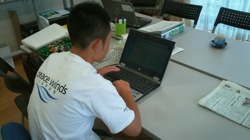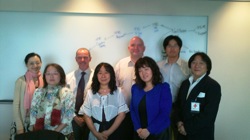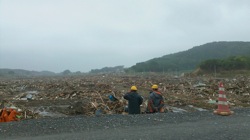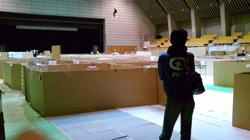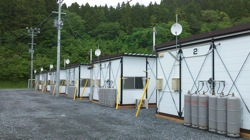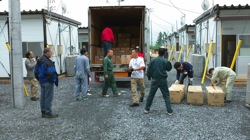Amidst the Middle Eastern revolutions and wake of the Arab Spring, the U.N. released a report last month announcing that Internet access is a basic human right, but some people are unconvinced.
The report, which was released May 16, is in conjunction with the ongoing response to the disconnection of Internet access and filtering of content by authoritarian governments around the world.
The UN Special Rapporteur on Freedom of Opinion and Expression, Frank La Rue, presented his report on freedom of expression and the Internet to the U.N. Human Rights Council (OHCHR) in Geneva last Friday.
The report states that the Internet has become an important medium upon which human expression occurs.
Mr. La Rue made similar assertions on World Press Freedom Day, stating the Internet is a public space that encourages the facilitation of dialogue in civil society. Alternatively, he contended, politicians can use the same channel to repress dissent.
The special Rapporteur warned in the report that fearful governments are increasingly restricting the flow of information on the Internet due to its potential to mobilize people.
“In recent months, we have seen a growing movement of people around the world who are advocating for change – for justice, equality, accountability of the powerful and better respect for human rights,” Mr. La Rue asserted in his speech to the OHCHR in Geneva.
He referred to China’s filtering systems which prevent access to sites containing key terms such as “democracy” and “human rights”; and the “just- in-time” blocking, which denies users access to key information during times of social unrest, such as in the Middle East, as events that are deeply concerning to him.
While noting that the Internet is a relatively new communication medium, Mr. La Rue stressed the applicability of the international human rights framework when assessing whether governments are unduly restricting the flow of information online.
“Legitimate expression continues to be criminalized in many States, illustrated by the fact that in 2010, more than 100 bloggers were imprisoned,” the Special Rapporteur warned. “Governments are using increasingly sophisticated technologies to block content, and to monitor and identify activists and critics.”
In the report, he explores key trends and challenges to the right of all individuals to exercise their right to freedom of expression, as guaranteed in Article 19 of the Universal Declaration of Human Rights:
The vast potential and benefits of the Internet are rooted in its unique characteristics, such as its speed, worldwide reach and relative anonymity. At the same time, these distinctive features of the Internet that enable individuals to disseminate information in “real time” and to mobilize people has also created fear amongst Governments and the powerful. This has led to increased restrictions on the Internet through the use of increasingly sophisticated technologies to block content, monitor and identify activists and critics, criminalization of legitimate expression, and adoption of restrictive legislation to justify such measures.
Mr. La Rue’s reference echoed Hilary Clinton sentiment on Internet freedoms and the U.S. continued interest in upholding the values of Article 19 when she spoke last January.
“The internet is a network that magnifies the power and potential of all others. And that’s why we believe it’s critical that its users are assured certain basic freedoms. Freedom of expression is first among them.” Clinton stated in her address.
“This freedom is no longer defined solely by whether citizens can go into the town square and criticize their government without fear of retribution. Blogs, emails, social networks, and text messages have opened up new forums for exchanging ideas, and created new targets for censorship.” she proclaimed.
The U.S. has made no comment on the most recent U.N. report.
One new idea featured in the report stresses that a person’s Internet access should remain connected even if an individual violates intellectual property law. This would typically apply to copyright infringers who knowingly download music and videos without paying.
This is one of the more controversial points in the report, as there is clearly a still a divide between how to balance the legal system with an individuals freedom of expression—without crossing the line of using the Internet for criminal purposes.
The Special Rapporteur went on to highlight in the report the need for better protections on intermediaries, which includes Internet access providers, and a person’s right to privacy with the inclusion of data protection
Mr. La Rue emphasized that states should include Internet literacy skills in school curricula, and provide training on how users can protect themselves from harmful content.
While this report provides good insight on how the Internet has increasingly become a vehicle for the freedom of expression and governments who deny access counter that liberty, public opinion has vacillated that the U.N. should deem it as a “universal human right,” but it has its critics.
the freedom of expression and governments who deny access counter that liberty, public opinion has vacillated that the U.N. should deem it as a “universal human right,” but it has its critics.
The influential and outspoken critic, Kentaro Toyama, is one such opponent. “The question is whether the Internet must be actively made available to everyone, which is the implication of something being a human right. There are many things that are desirable, but which cannot practically be provided for all, and are not absolutely critical to dignified human life.”
Gordon Kelly of Trusted Review, starts his article on the report by stating, “Air, water, free speech… there are many things over the years we have come to see as basic human rights. According to the United Nations this week we should all start getting used to another, perhaps more surprising one, Internet access.”
Their points are important and risks becoming redundant in the public’s common notion of what the La Rue is trying to achieve in this report, however, that is not the U.N.’s objective.
By definition, universal human rights are international standards that are set to help guard people around the world from severe political, legal, and social abuses. Examples of human rights are the right to a fair trial when charged with a crime, the right not to be tortured, and the right to engage in political activity.
It this sense, it should be noted that La Rue was not discussing Internet access as a new right, rather as an addition to the underlying importance of the right to freedom of expression. This should also imply access to information and the right to express ideas and opinions.
The human right to the freedom of expression and opinion encourages civil societies participation, associated with other democratic freedoms like freedom of press that creates a safeguard for other freedoms that are critical to leading a dignified human life. A voice to demand basic human rights that are not “guaranteed” by governments can ensure other rights, like minimal nutrition standards and clean water.
Internet access is not a guaranteed human right, rather it is a channel and tool used to fuel further civil liberties that encourage social and economical development in oppressed communities. Citizens’ ability to have their voices be heard is critical to enhancing their livelihoods and quality of life, as they can hold their governments accountable to addressing and meeting their needs.
There are other tools that have been previously used to further citizen’s rights to lead a better life. Take, for example, national government and U.N.’s initiatives in water sanitation centers.
Water sanitation centers were not declared human right, but they still serve as instruments in creating a clean source of drinking water for citizens to survive on. The centers are not a silver bullet solution for access to water, just like Internet is not an all-encompassing solution to development, but these tools help in its aim.
Internet access should not be thought of as the only tool to be used to enhance these democratic liberties—mobile and radio—are also devices that improve the ability to freely express opinion as a human right.
In addition, when La Rue argued that universal Internet access reducing authoritarian regimes stronghold in oppressing online dissidents, this was also highly criticized.
Toyama writes in response, “…the reality is that any dictator willing to shut down or censor the Internet is already engaged in violating other more important human rights, such as the right not to be shot in the head or tortured by secret police.
Though he is correct that any dictator censoring information is usually engaged in other fundamental human rights violations, extending beyond information control, this is not a valid argument against free speech.
However, there is a core meaning beyond censorship and shutting down Internet access by dictators and authoritarian regimes. As evidenced, in Iran’s proposed internal Internet, and China’s Great Firewall, these leaders recognize the power of communication in fueling the change desired by their citizens.
It also shows that they the Internet is a communicative tool that can be used to channel that change, and dictators are immediately threatened by it.
Although information may not appear at the base of Maslow’s hierarchy of needs, the freedom of expression and opinion are still protected human rights under Article 19. Public opinion seems to side with the United Nations, or on the BBC World Service survey finding that almost four in five people around the world believe that access to the Internet is a fundamental right.




